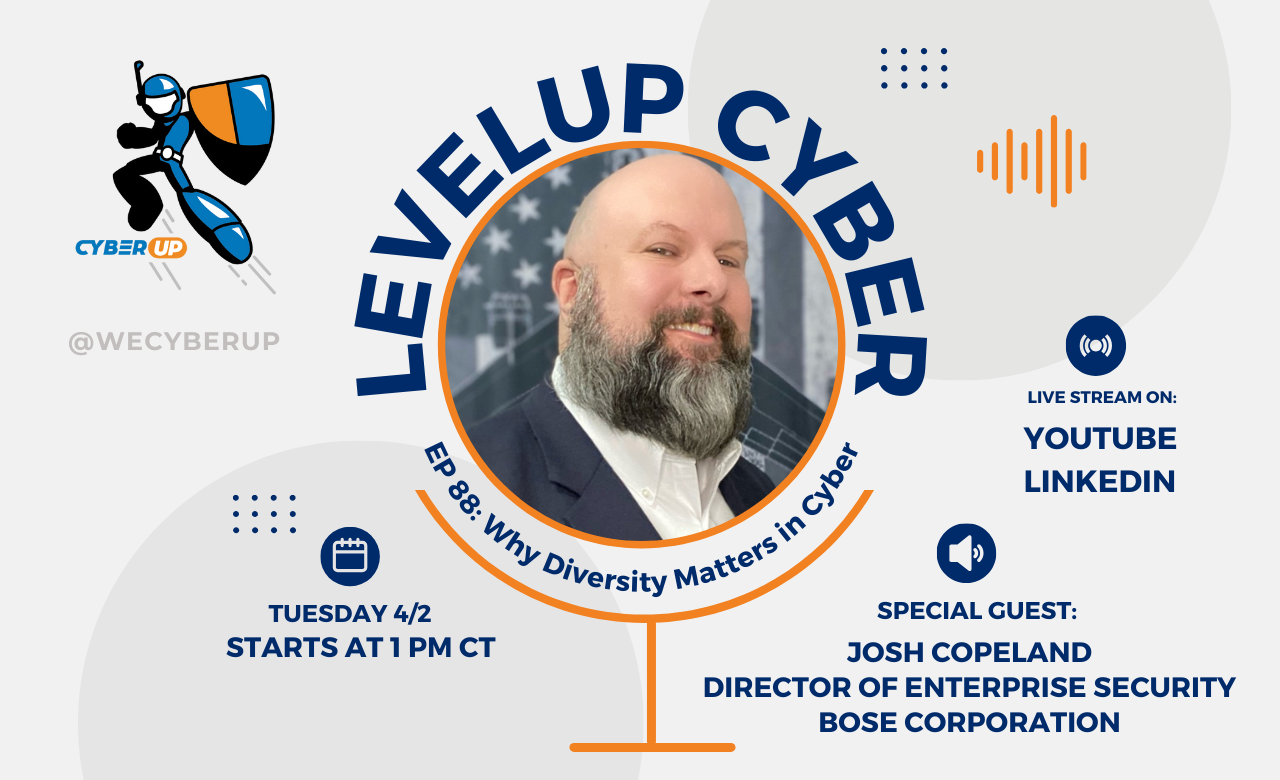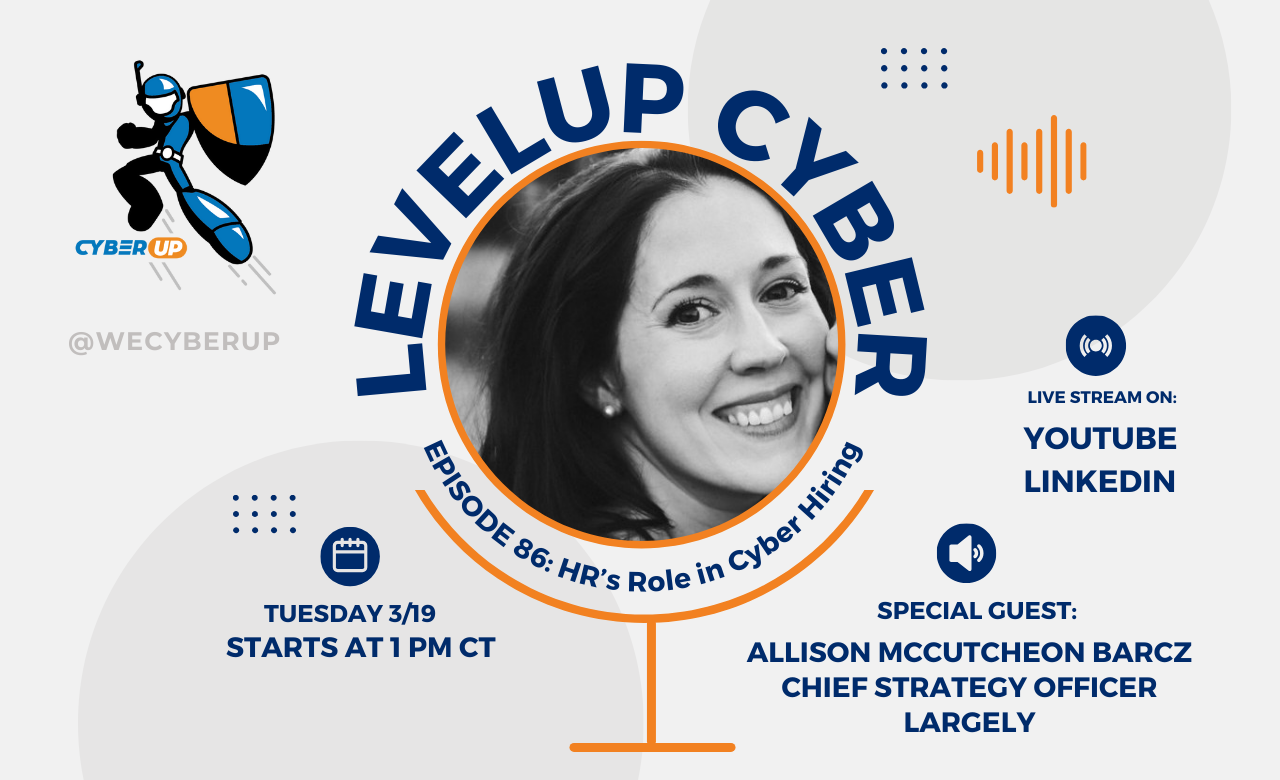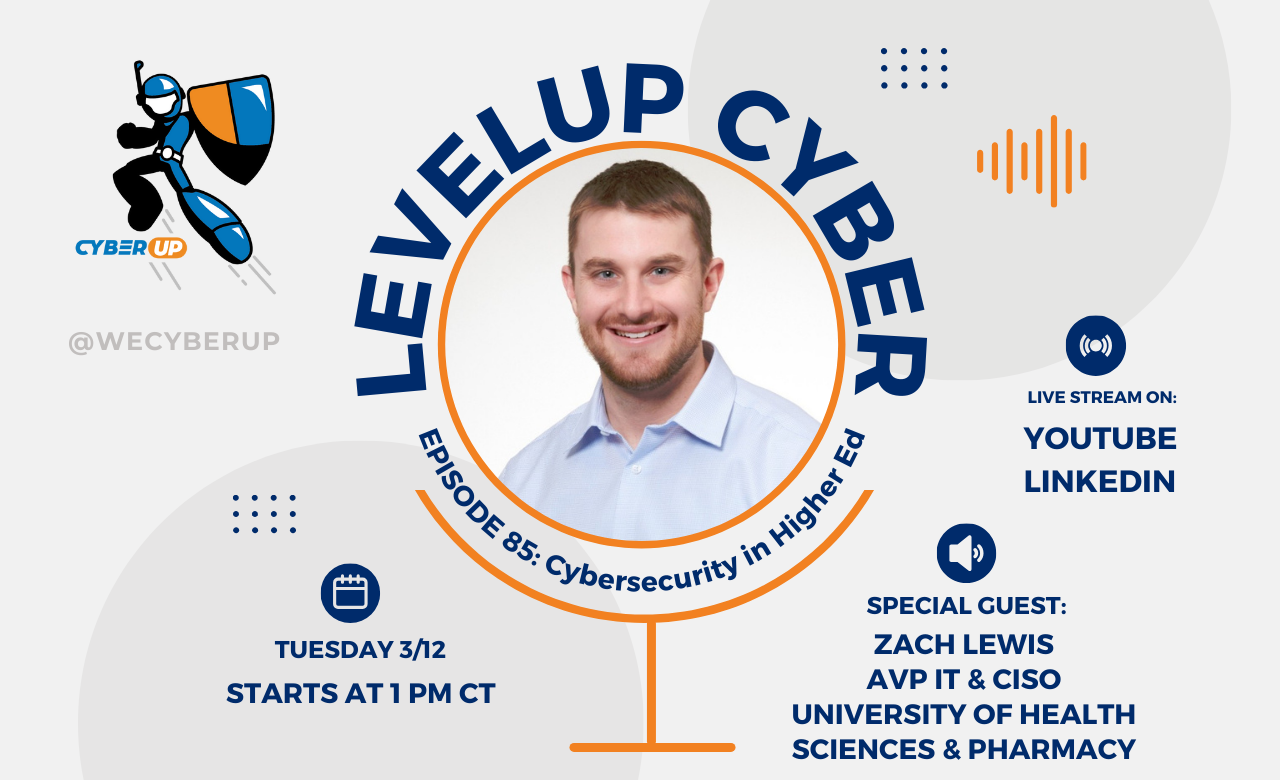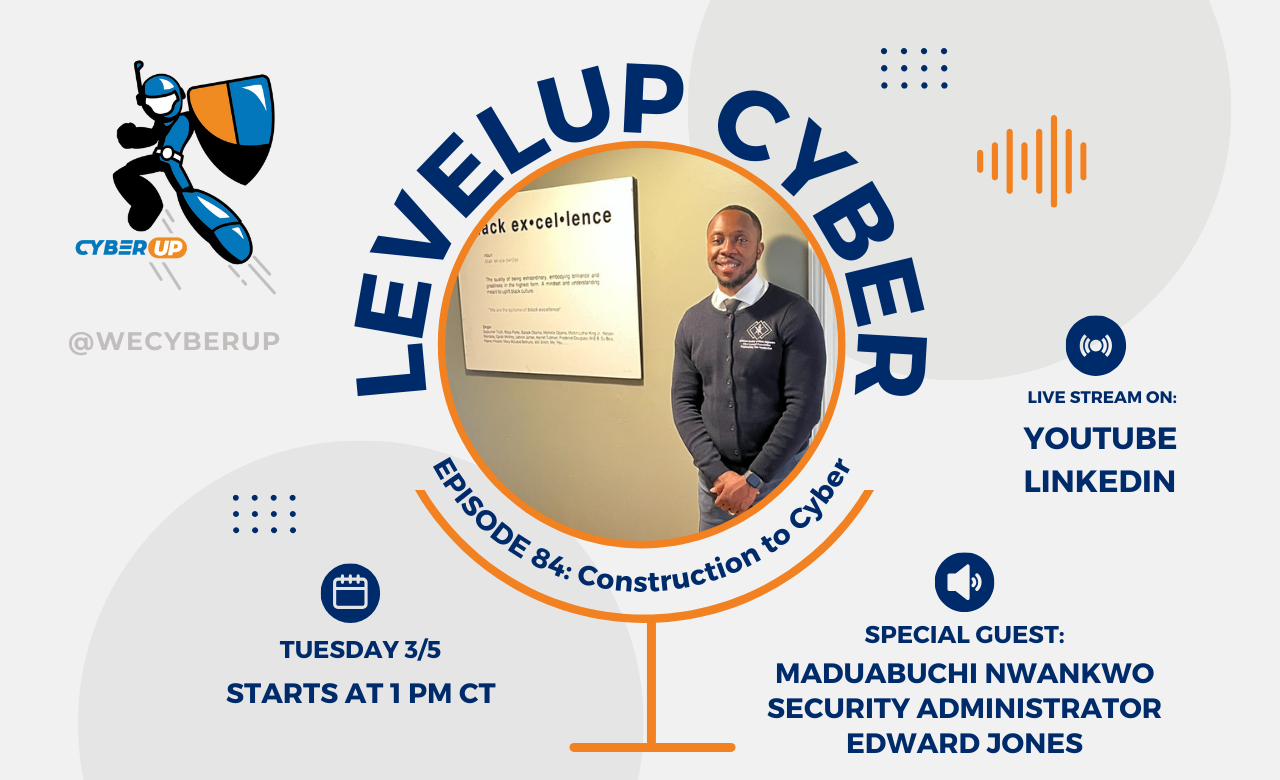
Cy Says Blog & Podcast
Posts about:
cybersecurity (4)


Ep 87: LevelUp Cyber w/Rachel Skillman - Skills to Pay the Bills
-1.png)
April Fools' Cybersecurity: Don't Let Phishing Lines Reel You In!
On this April Fool’s Day, it's not just pranksters and jokesters who are gearing up for mischief. Cybercriminals also see this day as an opportunity to unleash their tricks and scams on unsuspecting individuals and organizations. In this blog post, we'll delve into the importance of cybersecurity awareness during April Fool's Day and explore strategies to protect yourself and your organization from falling victim to cyber threats.
The Significance of Cybersecurity Awareness:
Cybersecurity awareness is crucial year-round, but it takes on added importance during times like April Fool's Day when cybercriminals may attempt to exploit the jovial atmosphere to carry out malicious activities. By raising awareness about common cyber threats and promoting best practices for online safety, individuals and organizations can minimize their risk of falling victim to cyber-attacks.
Understanding Cyber Threats:
Before diving into specific cybersecurity tips for April Fool's Day, it's essential to understand the types of cyber threats that may arise during this time. These threats can include phishing attacks, social engineering scams, malware distribution, and misinformation campaigns. Cybercriminals may capitalize on the spirit of April Fool's Day to send deceptive emails, create fake websites, or spread false information through social media channels.
Tips for Protecting Yourself:
- Verify Before You Click: Exercise caution when encountering suspicious links or emails, especially if they seem too good to be true or come from unfamiliar sources. Before clicking on any links or downloading attachments, verify the sender's identity and ensure that the website is legitimate.
- Strengthen Password Security: Use strong, unique passwords for all your online accounts and consider enabling two-factor authentication for an added layer of security. Avoid using easily guessable passwords or sharing them with others, as this can leave you vulnerable to unauthorized access.
- Stay Updated on Security Patches: Keep your software, operating system, and antivirus programs up to date with the latest security patches and updates. Regularly check for software updates and install them promptly to protect against known vulnerabilities and exploits.
- Be Skeptical of Unsolicited Offers: Be wary of unsolicited emails, messages, or phone calls promising prizes, discounts, or other incentives. If something sounds too good to be true, it probably is. Trust your instincts and avoid providing personal or sensitive information to unknown entities.
- Educate Your Team: If you're part of an organization, take the opportunity to educate your team members about cybersecurity best practices. Conduct training sessions, share relevant resources, and encourage a culture of vigilance and accountability when it comes to cybersecurity.
Protecting Your Organization:
- Implement Robust Security Measures: Ensure that your organization has robust cybersecurity measures in place, including firewalls, antivirus software, intrusion detection systems, and data encryption. Regularly assess your network security posture and address any vulnerabilities or weaknesses promptly.
- Monitor for Suspicious Activity: Implement monitoring tools and protocols to detect and respond to suspicious activity on your network. Monitor for signs of unauthorized access, unusual login attempts, or inconsistent behavior that may indicate a potential security breach.
- Backup Your Data: Regularly back up your organization's data and ensure that backups are stored securely and regularly tested for reliability. In the event of a cyber-attack or data breach, having backup copies of your critical data can help minimize disruption and facilitate recovery.
- Foster a Culture of Security Awareness: Promote cybersecurity awareness and best practices among your employees through regular training, awareness campaigns, and ongoing communication. Encourage employees to report any security incidents or concerns promptly and provide them with resources and support to stay vigilant online.
- Collaborate with Security Partners: Consider partnering with trusted cybersecurity vendors or experts to enhance your organization's security posture. Leverage their expertise and resources to identify and mitigate potential threats, assess your cybersecurity readiness, and develop a comprehensive security strategy tailored to your organization's needs.
This April Fool’s Day, it's essential to remain vigilant and proactive about cybersecurity. By staying informed about common cyber threats, adopting best practices for online safety, and implementing strong security measures, individuals and organizations can minimize their risk of falling victim to cyber-attacks. Remember, the best defense against cyber threats is a combination of awareness, preparedness, and proactive action.

Ep 86: LevelUp Cyber w/Allison McCutcheon Barcz - HR's Role in Cyber Hiring
.png)
Empowering Tomorrow's Cybersecurity Leaders
In the dynamic landscape of cybersecurity education, CyberUp’s PowerUp youth program stands as a beacon for young minds eager to explore the world of online safety. PowerUp youth program is a transformative initiative designed to provide a fun, free, and hands-on experience for students. Through engaging activities, the program empowers participants to understand the intricacies of the Internet and equips them with crucial knowledge on staying safe in the digital realm. By partnering with cybersecurity experts and local schools, PowerUp encourages students to think critically about their online presence while introducing them to the idea of cybersecurity as a career.
CyberUp’s PowerUp youth program, which seeks to eliminate barriers that would normally keep some students from receiving this essential information, could not exist without sponsors who believe in our mission. Today, we’d like to highlight two of our amazing sponsors: PwC and Maryville University.
PwC: Catalysts for Innovation and Learning
PricewaterhouseCoopers (PwC) a global leader in professional services, plays a pivotal role in the success of the PowerUp initiative. Beyond financial contributions, PwC employees have volunteered their time to share their expertise and experience with the young people in our program.
"PwC US supports the PowerUp youth education program for its ongoing impact in bringing awareness to youth around the cybersecurity space,” said Rik Boren, Partner at PwC. “Providing cybersecurity information and skills can help shape their education and future career opportunities, potentially in cybersecurity. By investing in this program, we are hopeful that we can help increase interest in cybersecurity topics with youth in underserved communities. Introducing cybersecurity skills today is investing in their future -- to develop and grow skills that are marketable for their future careers, help address the cybersecurity skills shortfall, and help the future security of the world."
Maryville University: Commitment to Academic Excellence
Maryville University brings its dedication to academic excellence to the PowerUp youth program through its generous sponsorship. Their commitment to improving the lives of St. Louis citizens through education is the type of mission that we at CyberUp love to collaborate with. Students can’t enter a career field they know nothing about, which is why it’s essential to introduce them to these pathways as early as possible so that they can make informed decisions about their future.
“Maryville University's sponsorship of the PowerUp youth program directly correlates with our strategic plan, access & opportunity for all, especially our youth,” explains Brian Gant, Assistant Dean of Technology at Maryville University.
Program Reach and Impact:
Thanks to the generous support of PwC and Maryville University, CyberUp’s PowerUp youth program has successfully reached over 250 students in the St. Louis area since October 2023. The program's hands-on approach and the sponsorship's commitment to education and mentorship have left a lasting impact on young minds, preparing them for a future where cybersecurity plays a crucial role.
If you would like CyberUp to visit your elementary or middle school and participate in our free program, you can find more information about it here: https://wecyberup.org/powerup. Additionally, if you're passionate about helping our youth become more cyber-aware and would like to volunteer with us, you can learn more about volunteer opportunities here: https://wecyberup.org/volunteer/.

Ep 85: LevelUp Cyber w/Zach Lewis - Cyber in Higher Education

Ep 84: LevelUp Cyber w/Maduabuchi Nwankwo - Construction to Cyber

Ep 83: LevelUp Cyber w/Drew Todd - The Importance of Conferences

Ep 82: LevelUp Cyber w/Kristi Cook - Richard Bajtlich Approved
.png)
Overcoming Imposter Syndrome in Cybersecurity
Let’s dive into a topic that many of us can relate to on a personal level: imposter syndrome. If you've ever felt like a fraud, doubting your capabilities and fearing that you'll be exposed as someone who doesn't belong, then you're not alone. Imposter syndrome is a common challenge in the cybersecurity field, but fear not, because we're here to help you overcome it.
First off, let's understand what imposter syndrome is all about. It's that constant nagging feeling that despite our accomplishments and expertise, we don't deserve our success. You know, that little voice in the back of your head saying, "You're just lucky," or "Everyone else knows more than you." Sound familiar? Yeah, we've all been there.
So how do we tackle this imposter syndrome beast? Let's explore some strategies to help you regain your confidence and embrace your skills in cybersecurity.
- Recognizing and challenging negative self-talk
It's time to silence that inner critic! Identify those nagging thoughts and challenge their validity. I find it helpful to give that inner critic a name so that when those negative thoughts come up, I can sit back and process what’s being said. It also makes it easier to tell that inner voice to sit down and shut up. Replace self-doubt with positive affirmations. “What if I CAN do it?” or “What if I DO get the job?” Remind yourself of the projects you've completed and the knowledge you bring to the table.
- Building a support network and seeking mentorship
Don't underestimate the power of a solid support system. Surround yourself with like-minded individuals who can uplift and inspire you. Seek out mentors who can guide you and provide valuable advice. Collaboration and learning from others can do wonders for your confidence and help motivate you to step outside of your comfort zone.
- Embracing continued learning and skill development
The cybersecurity field is ever-evolving, so make sure you stay on top of the latest trends and developments. Engage in continuous learning through online courses, attending webinars, or reading industry publications. Setting achievable goals and celebrating your progress along the way will boost your confidence.
- Practicing self-care and managing stress
Take time to care for yourself both physically and mentally. Engage in activities that help reduce stress, such as exercising, meditating, or pursuing hobbies. Balancing your work and personal life is crucial for maintaining overall well-being.
Now, let's talk about enhancing your confidence in the cybersecurity field.
- Acknowledging personal achievements and expertise
Take a moment to reflect on your past successes and the skills you've acquired. Give yourself credit for the challenges you've conquered and the growth you've achieved. Celebrate milestones, no matter how small, to remind yourself of your capabilities.
- Embracing failures as learning opportunities
Remember, mistakes are a normal part of the learning process. Instead of dwelling on failures, use them as stepping stones to success. Learn from your mistakes, adapt, and improve your skills. Failure doesn't define you; it's how you bounce back that truly matters.
- Developing a personal brand and showcasing expertise
In the age of social media, creating an online presence can be a powerful tool. Showcase your knowledge and skills through platforms like LinkedIn or personal blogs. Participate in industry events and share your expertise to establish yourself as a trusted professional.
Remember that imposter syndrome is more common than you may think. It's a hurdle that many professionals face, but it doesn't define your worth or expertise. By challenging negative self-talk, building a support network, and embracing continuous learning, you can overcome imposter syndrome or at least quiet your inner critic and step out of your comfort zone anyway. Celebrate your achievements, learn from failures, and showcase your expertise to build the confidence you deserve in the cybersecurity field.
